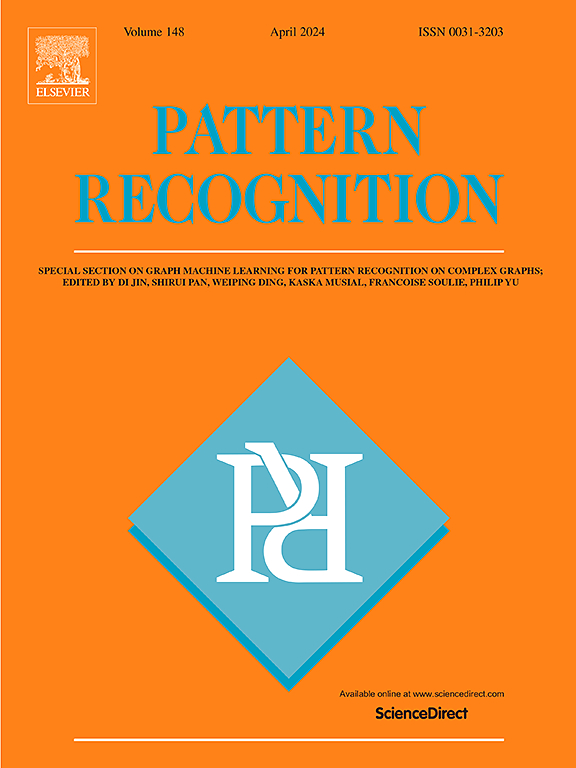基于SAM的领域不变表示学习用于血细胞分类
IF 7.5
1区 计算机科学
Q1 COMPUTER SCIENCE, ARTIFICIAL INTELLIGENCE
引用次数: 0
摘要
准确的血细胞分类对血液病的诊断、及时治疗具有重要意义。然而,在现实场景中,由实验室程序和设置的可变性引起的域转移通常会导致模型泛化性能的快速恶化。为了解决这个问题,我们提出了一种新的领域不变表示学习,通过分段任意模型(SAM)进行血细胞分类,称为DoRL。DoRL包括两个主要组件:基于lora的SAM (LoRA-SAM)和跨域自动编码器(CAE)。DoRL的主要优势是能够以无监督的方式从各种血细胞数据集中提取领域不变表示。具体来说,我们首先利用大规模基础模型SAM,通过LoRA进行微调,生成稳健且可转移的血细胞视觉表示。此外,我们引入了CAE来学习跨不同领域数据集的图像嵌入的领域不变表示。CAE减轻了图像工件和其他特定于领域的变化的影响,确保学习到的表示更加一般化。为了验证领域不变表示的有效性,我们使用了五种广泛使用的机器学习分类器来构建血细胞分类模型。在两个公共血细胞数据集和一个私人真实世界数据集上的实验结果表明,我们提出的DoRL实现了新的最先进的跨域性能,大大超过了现有的方法。DoRL新颖地集成了LoRA-SAM和跨域自动编码,为增强血细胞分类模型的泛化能力提供了一个强大而有效的解决方案,有可能改善患者的护理和预后。源代码可以在https://github.com/AnoK3111/DoRL上获得。本文章由计算机程序翻译,如有差异,请以英文原文为准。
Domain-invariant representation learning via SAM for blood cell classification
Accurate classification of blood cells is of vital significance in the diagnosis of hematological disorders, facilitating timely treatments for patients. However, in real-world scenarios, domain shifts caused by the variability in laboratory procedures and settings often result in rapid deterioration in model generalization performance. To address this issue, we propose a novel domain-invariant representation learning via the Segment Anything Model (SAM) for blood cell classification, referred to as DoRL. The DoRL comprises two main components: a LoRA-based SAM (LoRA-SAM) and a cross-domain autoencoder (CAE). The key advantage of DoRL is the ability to extract domain-invariant representations from various blood cell datasets in an unsupervised manner. Specifically, we first leverage the large-scale foundation model SAM, fine-tuned with LoRA, to generate robust and transferable visual representations of blood cells. Furthermore, we introduce the CAE to learn domain-invariant representations from the image embeddings across different-domain datasets. The CAE mitigates the impact of image artifacts and other domain-specific variations, ensuring the learned representations more generalizable. To validate the effectiveness of domain-invariant representations, we employ five widely used machine learning classifiers to construct blood cell classification models. Experimental results on two public blood cell datasets and a private real-world dataset demonstrate that our proposed DoRL achieves a new state-of-the-art cross-domain performance, surpassing existing methods by a significant margin. The DoRL, with its novel integration of LoRA-SAM and cross-domain autoencoding, provides a robust and effective solution for enhancing the generalization capabilities of blood cell classification models, potentially improving patient care and outcomes. The source code can be available at https://github.com/AnoK3111/DoRL.
求助全文
通过发布文献求助,成功后即可免费获取论文全文。
去求助
来源期刊

Pattern Recognition
工程技术-工程:电子与电气
CiteScore
14.40
自引率
16.20%
发文量
683
审稿时长
5.6 months
期刊介绍:
The field of Pattern Recognition is both mature and rapidly evolving, playing a crucial role in various related fields such as computer vision, image processing, text analysis, and neural networks. It closely intersects with machine learning and is being applied in emerging areas like biometrics, bioinformatics, multimedia data analysis, and data science. The journal Pattern Recognition, established half a century ago during the early days of computer science, has since grown significantly in scope and influence.
 求助内容:
求助内容: 应助结果提醒方式:
应助结果提醒方式:


